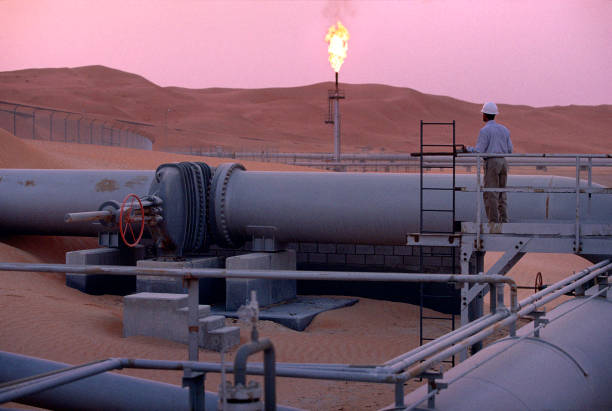WTI holds position near $66.50 as demand concerns offset Hurricane Francine impact

- WTI prices remain stable as demand concerns have counterbalanced the potential impact of Hurricane Francine on US Oil production.
- Oil demand faces challenges due to the growing adoption of electric vehicles in key markets like China.
- EIA Crude Oil Stocks rose by 0.833 million barrels for the previous week, against the forecasted 0.9 million-barrel increase.
West Texas Intermediate (WTI) Oil prices remain steady, hovering around $66.80 per barrel during Thursday's Asian session. Concerns over weakened demand have offset the impact of Hurricane Francine on the United States (US) Oil production, the world's largest crude producer.
In particular, Oil demand in key markets, such as China, is under pressure, with the growing adoption of electric vehicles reducing oil consumption.
On Wednesday, energy production in the US Gulf of Mexico was partially disrupted, and several Oil refineries in Louisiana scaled back operations ahead of Hurricane Francine's landfall, according to official reports cited by Reuters.
US Oil stockpiles increased across the board last week as crude imports rose and exports declined, according to the Energy Information Administration (EIA) on Wednesday. The report also showed that gasoline demand fell to its lowest level since May, while distillate fuel demand also dropped, alongside a decline in refinery activity.
Despite a smaller-than-expected inventory build, crude Oil prices remained subdued. EIA data showed that Crude Oil Stocks rose by 0.833 million barrels for the week ending September 6, slightly below the forecasted increase of 0.9 million barrels.
Earlier in the week, the Organization of the Petroleum Exporting Countries (OPEC) lowered its forecast for global Oil demand growth in 2024, marking its second consecutive downward revision. OPEC also reduced its demand expectations for the upcoming year.
Oil traders are now anticipating the release of the International Energy Agency's (IEA) monthly market report later this week, searching for indications of a weakening demand outlook, according to a note from ANZ Research on Thursday.
WTI Oil FAQs
What is WTI Oil?
WTI Oil is a type of Crude Oil sold on international markets. The WTI stands for West Texas Intermediate, one of three major types including Brent and Dubai Crude. WTI is also referred to as “light” and “sweet” because of its relatively low gravity and sulfur content respectively. It is considered a high quality Oil that is easily refined. It is sourced in the United States and distributed via the Cushing hub, which is considered “The Pipeline Crossroads of the World”. It is a benchmark for the Oil market and WTI price is frequently quoted in the media.
What factors drive the price of WTI Oil?
Like all assets, supply and demand are the key drivers of WTI Oil price. As such, global growth can be a driver of increased demand and vice versa for weak global growth. Political instability, wars, and sanctions can disrupt supply and impact prices. The decisions of OPEC, a group of major Oil-producing countries, is another key driver of price. The value of the US Dollar influences the price of WTI Crude Oil, since Oil is predominantly traded in US Dollars, thus a weaker US Dollar can make Oil more affordable and vice versa.
How does inventory data impact the price of WTI Oil
The weekly Oil inventory reports published by the American Petroleum Institute (API) and the Energy Information Agency (EIA) impact the price of WTI Oil. Changes in inventories reflect fluctuating supply and demand. If the data shows a drop in inventories it can indicate increased demand, pushing up Oil price. Higher inventories can reflect increased supply, pushing down prices. API’s report is published every Tuesday and EIA’s the day after. Their results are usually similar, falling within 1% of each other 75% of the time. The EIA data is considered more reliable, since it is a government agency.
How does OPEC influence the price of WTI Oil?
OPEC (Organization of the Petroleum Exporting Countries) is a group of 13 Oil-producing nations who collectively decide production quotas for member countries at twice-yearly meetings. Their decisions often impact WTI Oil prices. When OPEC decides to lower quotas, it can tighten supply, pushing up Oil prices. When OPEC increases production, it has the opposite effect. OPEC+ refers to an expanded group that includes ten extra non-OPEC members, the most notable of which is Russia.





